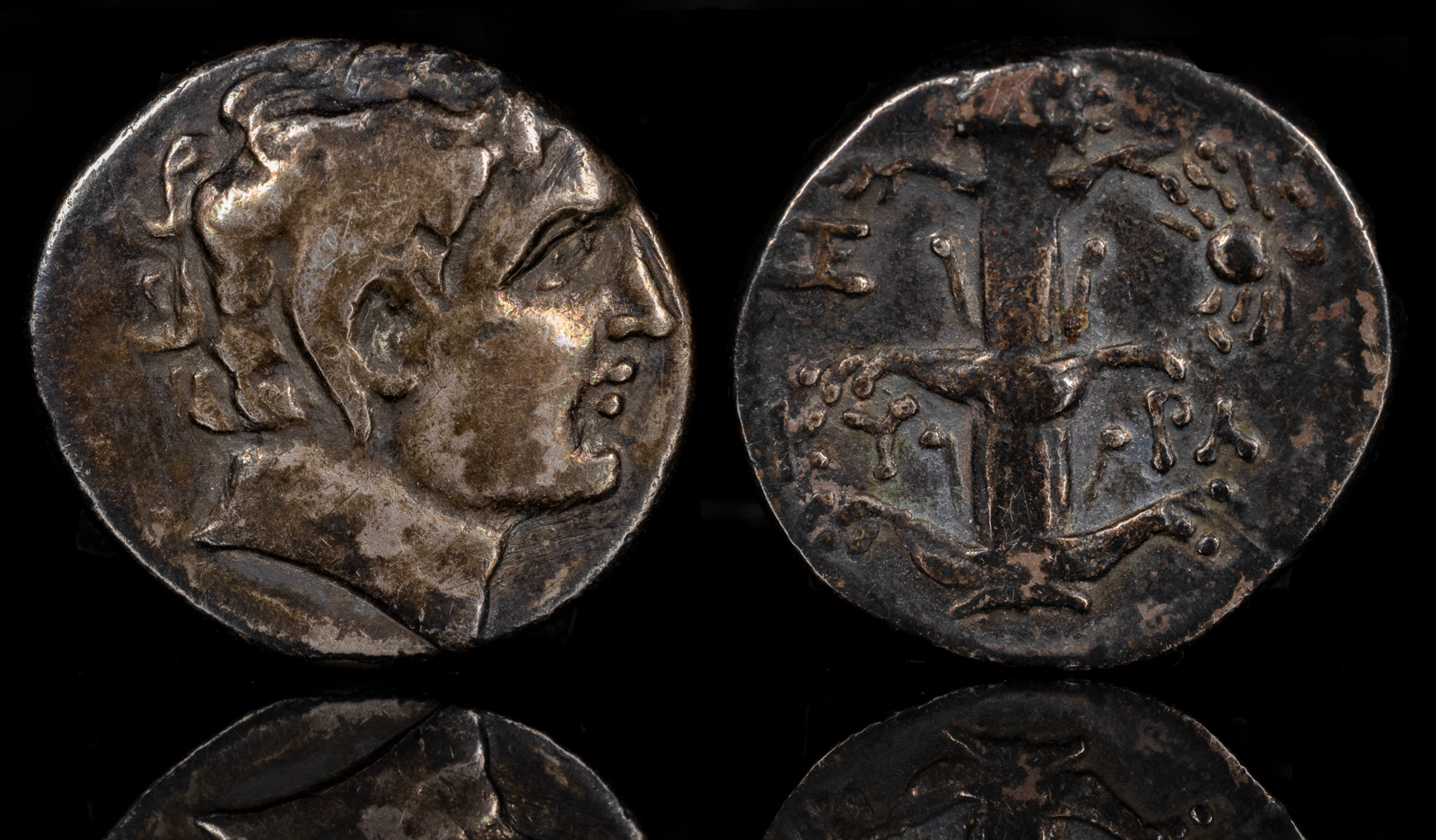
Kyrene, Magas
Ptolemaic governor, c. 300-282/75 BC
AR Didrachm 20mm, 7.30g, 12h
Head of Karneios r. R/ Silphion plant; ZE monogram to upper l., crab to upper r., KY-PA across lower field.
BMC 256; cf. SNG Copenhagen 1243
For most of the coins here, I’ve talked more about the rulers who minted them than what was depicted. That’s not the case for this fascinating image.
Pictured here is silphium, a fascinating plant that is generally believed to have been extinct for 2000 years. It grew only around Kyrene, and was extraordinarily valuable back then. It was so valuable, in fact, that Kyrene was a fabulously wealthy area, and therefore of great strategic value.
While we not sure what silphium was truly capable of, the ancients prescribed it for a variety of afflictions. Pretty much most of your common ailments were supposedly treatable. Of further interest is it supposedly served as a contraceptive and inducer of miscarriages, and was therefore of extreme importance to women’s freedom back then. Pretty much every woman of means had some.
So crucial was silphium to amourous adventures, that its seeds still remain the symbol of love – literally. Other coins from Kyrene depict the seeds of silphium as “heart shaped” and we now believe this ancient symbol comes from that plant. So, when you fill out that Valentine’s day card, you’re really drawing a silphium seed.
Magas, who minted this coin, clearly wanted to get in on that cash. His mother was Berenike I, who eventually married Ptolemy I and bore him Arsinoe II and Ptolemy II Philadelphos, who eventually inherited Egypt.
His stepfather sent him to Kyrene at a young age, but after Ptolemy I died and his stepbrother Ptolemy II took over, Magas revolted most likely with the idea of keeping all that silphium cash to himself. He was mostly successful, and ruled Kyrene independently until his death.
As for the beloved silphium, it became extinct during the period of the Roman Empire. There are various theories on what happened – such as overgrazing by cattle, climate change, desertification, or mismanagement.
Regardless what happened, one curious artifact I see on this coin is the crab. There’s no clear reason for a crab to be depicted, but my strong suspicion is it played a vital part in the plant lifecycle. Either that, or they were delicious, and therefore included too.
Approximate birth of Magas.
Death of Philip, father of Magas.
Marriage of Ptolemy I with Berenike, mother of Magas.
Magas refuses to submit to Ptolemy II Philadelphos and declares himself king of Kyrene.
Marriage of Magas to Apama II.
Magas joins an alliance with Antiochos I, and each attacks Ptolemy II Philadelphos and Egypt from a different side. Magas is forced to call off his attack due to an internal revolt in Libya.
Birth of Berenike II to Apama II and Magas.
Death of Magas, king of Kyrene. His wife Apama takes over.